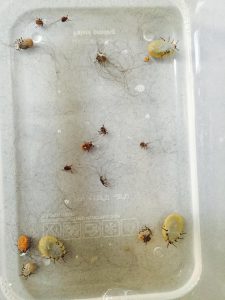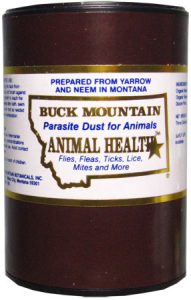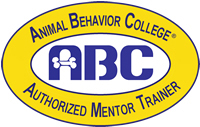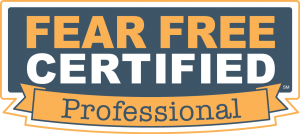During my 11+ years of working with pets and their owners in the Valley, I’ve had the good fortune to build some great relationships with local veterinarians. They’ve educated me on so many topics including how pain effects behavior, illnesses that manifest behaviorally, and so much more. I’ve sent them my reactive and fearful dogs and cats, knowing that they would receive the kindest, most humane treatment out there. So, it’s safe to say – I adore the vets I work with. Another amazing thing about them is that they get back to me almost instantly when I have a question.
This week, I started working with a young Bernese Mountain Dog pup in Montague. In my first lesson with her, I pulled off 14 ticks. Some were huge and bloated, others were freshly attached. This poor puppy tantrummed and cried, it was not the ideal way to begin our relationship. It was a LOT of restraining and unhappy handling (despite the hot dogs pieces she was given to off-set the negative part of the experience). The owner is very committed to holistic treatment and really wants to avoid the topicals that deter and kill fleas & ticks. Additionally, she has children who are cuddling and kissing the dog and, obviously, no one wants their kids ingesting toxic topical treatments!
Divided by the split interests of wanting to keep Sadie flea & tick-free while keeping things as holistic as possible, I decided to reach out to my local posse of veterinarian friends and get their opinions. I contacted three of them and within 24 hours had a plethora of useful knowledge. I wanted to share it with everyone since the flea and tick issue is HUGE and on-going. One quick disclaimer – this is my interpretation of what they told me. ALWAYS check with YOUR vet about what treatment is best for your dog.
Everyone agreed that, hands-down, the topically applied treatments are the most useful for handling fleas and ticks. K9 Advantix was listed as the most effective, with Frontline being a close runner-up.
There are some newer products on the market, which I was excited to learn about. There are two oral treatments your dog can take – Nexgard and Bravecto. Nexgard is given monthly and Bravecto is given every 12 weeks. These are great options for families where the dog is getting lots of love from the kids. However, there is a major drawback, which is that these don’t deter fleas and ticks, they only kill them. So, that means that your dog will still have lots of creepy crawlies coming in from walks. The kill time is about 30 minutes (yay!) but if they fall off alive, they’ll be looking for another host and guess who that’ll be? Yep, some human!
There’s a collar called Seresto. If your dog goes in the water, it’ll last about 6 months. If not, it’ll last up to 8 months. It’s non-toxic if ingested by humans or dogs, but otherwise works the same way as a topical. It slowly releases chemicals that deter and kill fleas and ticks.
Lastly, there is a vaccine for Lyme Disease. It’s probably about 80% effective at preventing transmission. However, it does not prevent the other tick-born illnesses out there and also doesn’t deter fleas and ticks from getting on your dog.
On the holistic side of things, there are some options, as well. There’s a Parasite Dust which you can put on the dog and in the house (I sprinkle it in doorway thresholds, for example). You have to reapply every time the dog goes outside but it can make a big difference. It’s a diatomaceous earth product.
Using Cedar wood oil sprays can also deter ticks. That’s an easy one to spritz into the environment.
I’ve included links on all of the products I’ve mentioned so you have access to them. Remember, check with your vet about what the best option is for your dog. There’s a lot of stuff I’m not getting into like seizure-sensitive dogs, nursing dogs, geriatric dogs and more.




 Get our monthly newsletter packed full of helpful training tips!
Get our monthly newsletter packed full of helpful training tips! 






